The eradication of poliomyelitis worldwide is achievable in our lifetime, thanks to efficient networks and structures established since the late 1980s. These systems have also proven invaluable in responding rapidly and successfully to pandemics such as Ebola or more recently, Covid-19. Investing in polio eradication should thus be a priority, as it strengthens pandemic preparedness, resilience and response.
The resurgence of polio in the 21st century
Poliomyelitis, a highly infectious disease caused by the poliovirus and mainly affecting children under five, can cause irreversible paralysis in 1 out of 200 infections, with 5 to 10% of deaths occurring once the paralysis reaches breathing muscles. With hundreds of thousands of children affected every year, polio was one of the most feared diseases worldwide before a vaccine was developed in 1955. The success of the polio vaccine allowed the international community to practically eradicate poliovirus globally in 2015, leaving only two countries where the poliovirus is still endemic: Afghanistan and Pakistan.
But recent wild poliovirus’ (WPV) resurgence in countries where no cases were recorded in years showed that polio is still active and does spread outside of countries where it is still endemic. In 2022, Malawi declared a WPV outbreak linked to a strain in Pakistan, classified as a “national health emergency”, despite the fact that the country last recorded a case of wild poliovirus in 1992.
“Polio anywhere is a threat everywhere.”
Polio thus still demands great attention from the international community, notably since the Covid-19 pandemic heavily disrupted routine health services and the delivery of routine immunization. Indeed, polio anywhere is a threat everywhere. Traces of vaccine-derived poliovirus (cVDPV), a mutated form of the virus, have been detected in areas of polio-free countries where immunization rates are low like in 2022 in sewage samples in London, where polio immunization rates are below target levels. In November 2022, Indonesia -polio-free since 2014- announced an outbreak of polio disease after a new case of cVDPV was reported in the province of Aceh. This area also has very low immunization rates, which led authorities to launch a vaccination campaign for children under 13.
These recent examples show that all forms of poliovirus can still cause great harm, especially in regions where immunization rates do not reach established targets. Vaccination and disease surveillance are the only reliable tools to prevent outbreaks: in this context, threats to immunization coverage such as vaccine hesitancy or insufficient supplies must be tackled by public authorities. Vaccine hesitancy for instance is a growing issue both in developed and developing countries, and is considered by the WHO to be one of the top 10 threats to global health. It is therefore imperative that routine immunization, vaccination and surveillance be integrated at the core of public health policies to prevent the resurgence of polio epidemics worldwide.
The impact of the GPEI on countries’ disease surveillance capacities
The international community heavily invested in polio eradication efforts starting in the late 1980s, when the Global Polio Eradication Initiative (GPEI) was created. Ever since, the GPEI has funded experienced health workers, infrastructures and networks in more than 50 countries to achieve global eradication. The adaptability of these polio workers and their experience working with communities and professional networks have placed these personnel in a key position to respond to other epidemics and effectively deliver care and vaccines to populations. As such, the GPEI has placed particular emphasis on funding and supporting women health workers. Their often privileged access to, and experience with, communities and children, is pivotal in rolling-out routine immunization.
In addition to international efforts, increased regional cooperation was key in eradicating polio. In the 1990s, under the leadership of Nelson Mandela and the launch of the ‘Kick Polio out of Africa’ campaign, African countries started to shape an African network of polio laboratories with the support of the World Health Organization. This network, composed of more than 60 national laboratories, 16 regional reference laboratories and 6 global specialized laboratories aimed at improving the detection of polio and disease surveillance at national and regional level.
The surveillance and disease control capacities inherited from the polio laboratories network participated in the strengthening of integrated disease surveillance capacities in African countries that were then able to respond to other diseases. In the same fashion, other resources (such as health workers) that had initially been set up for polio eradication were successfully mobilized when facing outbreaks of measles, dengue or Ebola virus.
This was the case in Nigeria, where the National Polio Emergency Operations Center coordination model was used to detect and track the 2014 Ebola outbreak. Still in Nigeria, polio health workers were involved in the 2018 cholera outbreak response, helping with active case finding, dissemination of public health information and administering vaccines. Polio health workers have thus become focal points for immunization in African regions thanks to their experience with polio and their ability to reach underserved areas and isolated populations.
Polio oriented infrastructures and trained personnel are a valuable resource to help communities increase their integrated disease management and surveillance capacity, and build resilience to health threats, including infectious diseases’ outbreaks.
Covid-19 pandemic: new lessons learned
Countries have faced enormous challenges in containing the spread of Covid-19 and in coordinating resources needed for its response. In many countries, the existing and well functioning polio networks were the only resources that had the capacity of organizing quickly to respond to the pandemic.
In India, the Social Mobilization Network initially established for polio worked with local leaders to ensure a good understanding of social-distancing messaging for Covid-19. Health workers in Nigeria, India and Somalia also put their knowledge and skills to use to perform Covid-19 testing, surveillance and the dissemination of health information. The GPEI highlighted that in 36 out of the 41 countries where the Initiative funds polio personnel, polio health workers ended up dedicating on average 50% of their time to the Covid response. In Nigeria, an app used by polio health workers to monitor and control the spread of polio was reprogrammed to include Covid-19 surveillance indicators helping to track the virus.
The Covid-19 pandemic also put governance in the spotlight: coordination between relevant authorities at the global, regional and local level, as well as an improved regional governance, are key in order to ensure a coherent response to outbreaks.
Achieving polio eradication and pandemic preparedness and response: two birds with one stone
The lessons of the fight against polio tell us that global polio eradication is within reach if efforts in public sensitization, awareness, prevention and vaccination are maintained and increased. However, the GPEI still needs to raise an additional $1.5 billion in order to fully implement its 2022-2026 programme and strategy. The projection of this long-term gap is unprecedented, and poses risks to the achievement of vaccination targets, ongoing surveillance and implementation of polio eradication activities. Although donors’ global health investments have never been higher, the growing needs, shifting of priorities and challenging times pose a challenge to polio eradication, but also to progressing towards the realization of the Pandemic Preparedness and Response (PPR) agenda. Indeed, PPR is being embraced as part of many countries’ global health strategies, and also the subject of a 2023 UN High Level Meeting, spurring the creation of new international mechanisms and accords.
“The story of polio is ultimately the story of preparedness and response. [...] Far from being an investment to target a rare disease only, it is essentially an investment for a safer world.”
The story of polio is ultimately the story of preparedness and response. Polio must thus inform discussions on PPR, and efforts towards global polio eradication can be leveraged to strengthen countries’ resilience and capacity to respond to other outbreaks. This effort is beneficial in advancing the pandemic preparedness agenda and improving essential PPR tools, notably in hard to reach and underserved communities. Far from being an investment to target a rare disease only, it is essentially an investment for a safer world.
Our two recommendations to progress towards a polio-free, pandemic-ready world:
- Increase funding for the GPEI, which efforts for polio eradication contribute to building resilient infrastructures and trained workforce;
- Draw lessons from the fight against polio to guide discussions on PPR and develop improved surveillance systems and rapid response to outbreaks.



